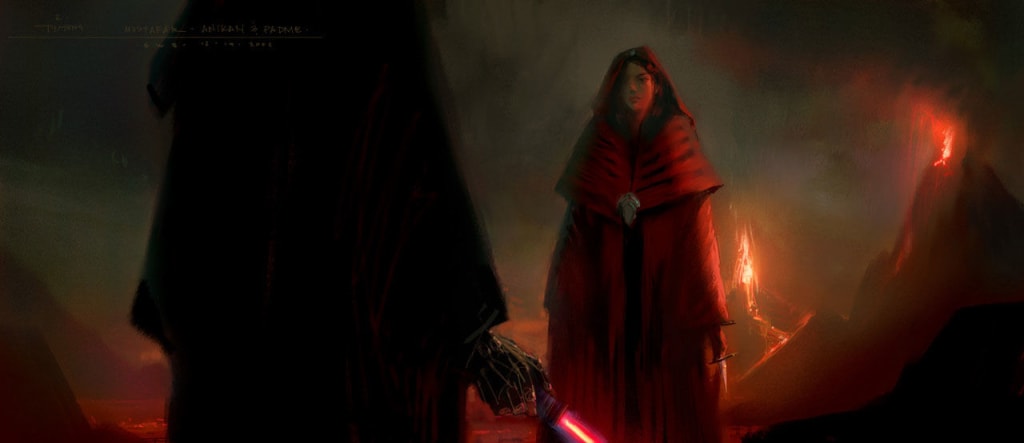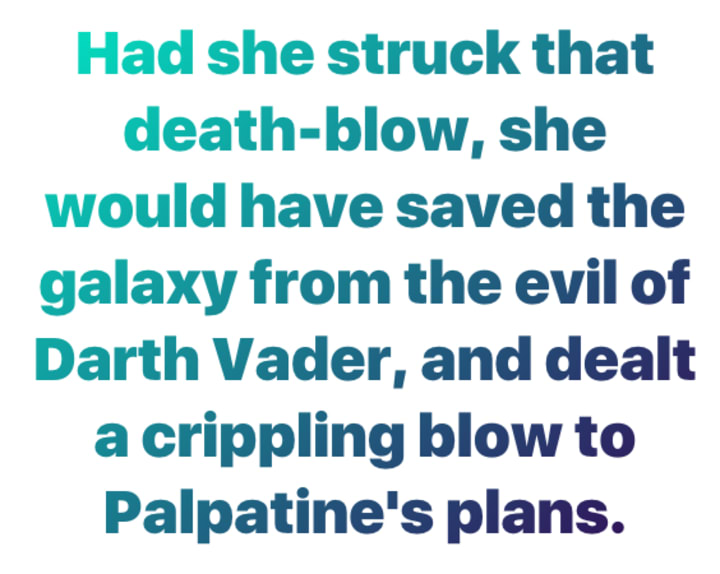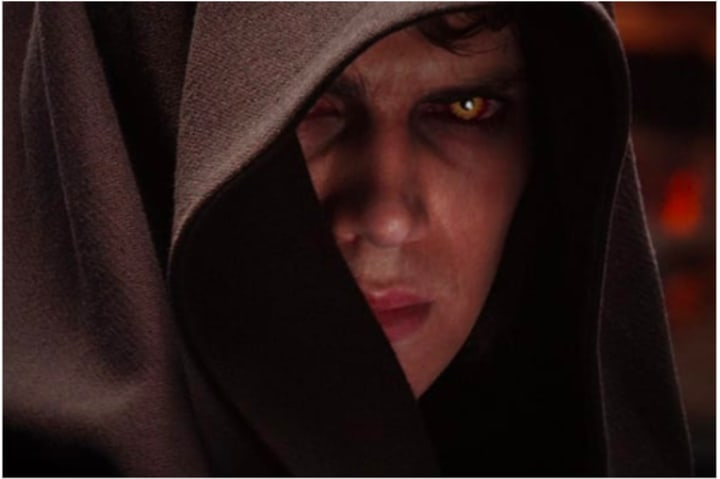
Let's face it: nowadays, Star Wars is big news again. But back in 2005, when #GeorgeLucas finally released Revenge of the Sith, the franchise's blockbuster days seemed certain to have come to an end. And although the movie may be the best of the Prequel Trilogy, fans were left with the nagging sense that it could just have been something... better. Of course, the film wasn't exactly helped by the fact that Matt Stover's novelization put the screenplay to shame!
Now, though, we've just gotten a hint of the original ending for Revenge of the Sith. Concept artist Iain McCaig — who played a key role in helping Lucas plot the film — has just blown the lid on the original plan. And it may well have been good enough to redeem the entire Prequel Trilogy!
The Ultimate 'How It Should Have Ended'!
When we first met Padmé Amidala in The Phantom Menace, she was a warrior Queen. In Attack of the Clones, it was Padmé who insisted she and Anakin had to head to Obi-Wan's rescue. In Revenge of the Sith, she became a stay-at-home Senator, watching her husband's descent into madness and doing precious little to stop it. It's a jarring transition, one of the most heavily criticized problems in the whole Prequel Trilogy.
And it could all have been so very, very different.
Digital Spy has stumbled upon a speech by concept artist Iain McCaig, who played a key role in helping George Lucas script the film. Speaking at an Academy of Art University event in 2016, McCaig has revealed the original ending of Revenge of the Sith. And, fellow Star Wars fans, the original concept was amazing.

As readers of Matt Stover's novelization will know, Lucas toyed with the idea that Padmé herself created the Rebellion. In the original concept, though, she didn't just meet with fellow concerned Senators; she realized that the Republic was rotten, and she actually met with the Separatists! As McCaig explained:
"And then [Anakin] leaves, moments later in come the Separatists, and right behind his back she's starting the Rebellion to overthrow him. 'Cause Padmé can see that he's becoming a monster. He's Apocalypse now, right?"
Imagine that scene for a moment. The Clone Wars may have only been raging for a few years, but Padmé has been opposing the Separatists since she was a teenager. After all, the Trade Federation — a key member of the Separatist Alliance — invaded Naboo while she was Queen. And yet, Padmé has clearly spotted the evil of Palpatine, and has even recognized her own husband's fall to the dark side. So much so that she's willing to meet with the Separatists in order to work out how to oppose them.
The Shocking Confrontation On Mustafar
Even in this original concept, though, matters clearly don't end well for the Separatists; Anakin still ends up on Mustafar, as in the final film. We can assume that Padmé's allies are slaughtered, probably with the same dry quips. And Padmé still follows Anakin to Mustafar.
"At the end, to Mustafar? When she goes to see him, she has a knife in her hands. I know she does, check the concept art in the book. She gets off that ship with the knife. She runs up, throws her arms around him, he lets her. She's got the knife at his neck, she's going to kill him. He lets her.She can't do it.She loves him too much to stop him, even when he's become the monster."
What a plot twist. In this original concept, Padmé's sense of morality collides head-first with her love for her husband. Had she struck that death-blow, she would have slain the Chosen One - she would have saved the galaxy from the evil of Darth Vader, and dealt a crippling blow to Palpatine's plans. And she knew it. But for all she knew that truth, Padmé simply couldn't do it. For all Anakin had fallen to the dark side, for all he had become the monster, she still loved him with all her heart.

As McCaig tells it, that's when Obi-Wan Kenobi enters the scene. Things play out pretty much as in the final version from this point on, with Anakin lashing out in rage — and Padmé almost killed at the hands of the man she couldn't kill.
It's almost Shakespearian in its sense of tragedy, a twist that's absolutely breathtaking. Sadly, of course, McCaig moved on — and the plot headed in a completely different direction.
Why Didn't George Lucas Do This?
Only one question is on the lips of Star Wars fans all over the world right now: Why? Why didn't Lucas go with this version?
I think there are two reasons. The first is simply that the Separatists were beyond redemption. Cast your eyes back to Attack of the Clones, and you can see no redeeming qualities in the Separatist movement; they're just another group of pawns, manipulated by Sidious because of their own pride and greed. There's simply no way the Rebel Alliance we saw in the Original Trilogy could have been founded by these guys.
In fact, McCaig's account suggests he knew that. After all, he describes Anakin heading to Mustafar, presumably for a similar reason. If that's the case, then Padmé's idea of a rebellion dies with her, becoming just another tragic, doomed subplot. The Rebel Alliance itself is presumably formed by others.

The second reason, of course, is that George Lucas wasn't making these films for adults. He was making them for children; and as dark as Revenge of the Sith may be, he did his level-best to balance the darkness out. Matt Stover had no such concerns when he wrote the film's novelization, and the difference between book and film is striking. For Lucas, I suspect this plot-twist was simply far too dark.
I can't lie; I would have preferred this version. Even if Padmé's attempt to start a rebellion was doomed to failure, she'd still have been more of a well-rounded character — not just a whiner, but a fighter to the last, daring to stand for what she believed in. And the sense of tragedy as the film came to a close would be even greater — for all she could not kill Anakin, he was the one who killed her.
I can only thank Iain McCaig for giving us a glimpse of the story that almost was.

Credit: Lucasfilm
(Source: Digital Spy)
About the Creator
Tom Bacon
A prolific writer and film fan, Tom has a deep love of the superhero genre.






Comments
There are no comments for this story
Be the first to respond and start the conversation.